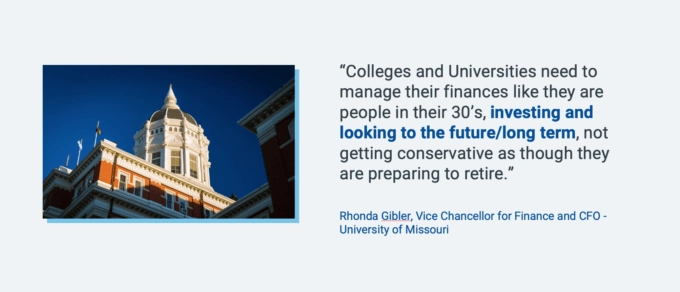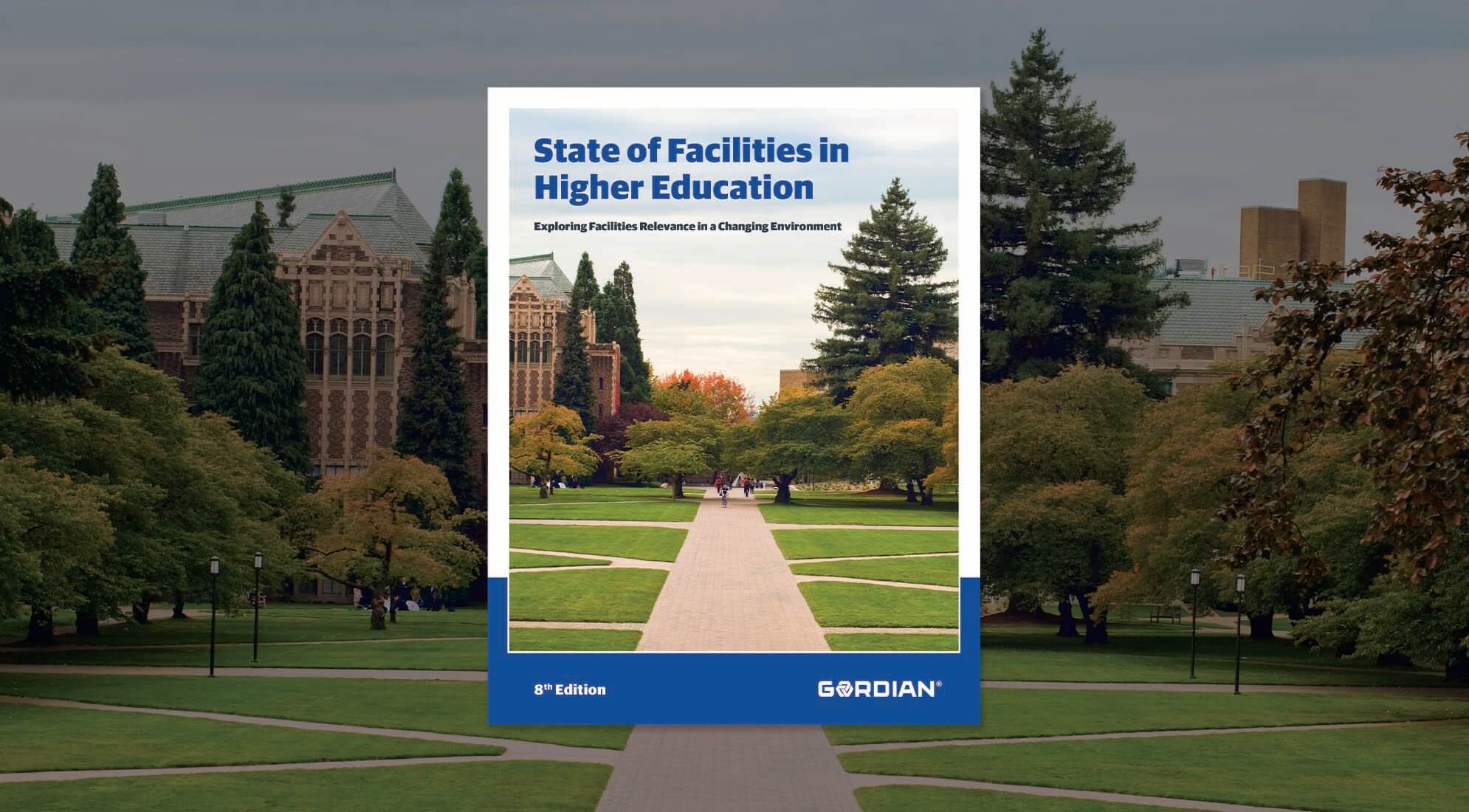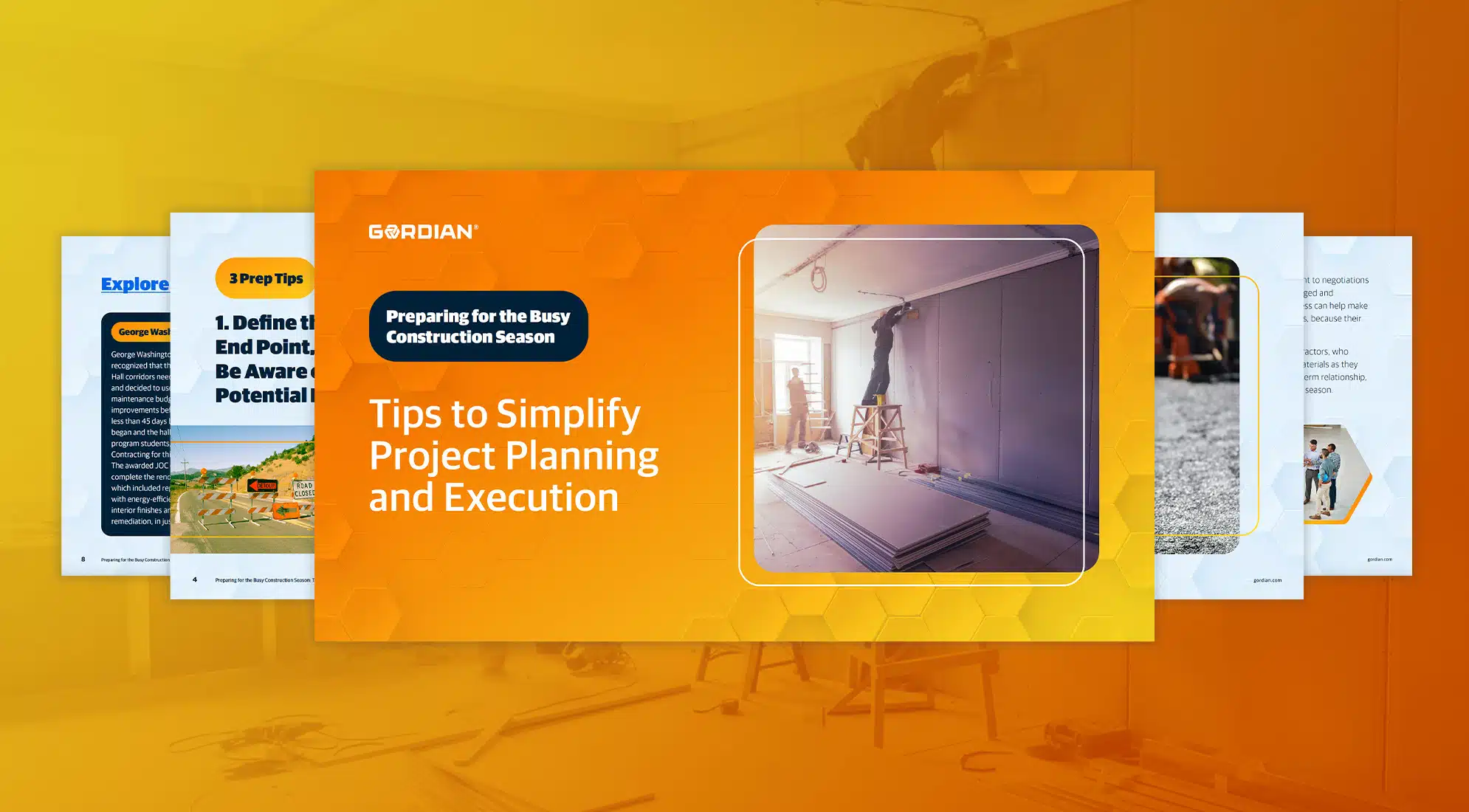In February of 2021, Gordian, in collaboration with APPA, published its annual State of Facilities in Higher Education. The eighth edition of the report focused on the transitioning state of college and university campuses as a result of the financial and enrollment trends existing before the coronavirus pandemic, the impacts of COVID-19 and the craters left in its wake, and the future of facilities stewardship in a higher education landscape that will never be the same.
The State of Facilities report has generated a wealth of conversation as leaders in the higher ed space grapple with dramatic changes to their long-standing business model and shifting expectations of the college/university experience. In an effort to continue this all-important discussion, Gordian’s Vice President of Market Strategy and Development for Higher Education, Pete Zuraw, and E. Lander Medlin, Vice President and CEO of APPA, are answering a selection of questions we’ve received from industry leaders. This first post addresses questions about the future of campus space.
Q: Space needs are changing outside of education, but have you thought about the impact of a large number of empty office buildings as companies realize the savings on work from home? – Tom B., The College of St. Scholastica
A: Tom, for the institutions in close proximity to empty buildings and with needs that align with available space, commercial space use reduction may represent an opportunity for campuses to avoid new construction or accelerate modernization efforts. The extent of that opportunity varies. The many institutions around the country who are already a dominant element within their community, or who are in need of a certain type of space — think performing arts, athletics, specialty science and the like — that is not readily available or easily modified from existing commercial space, this opportunity is dramatically reduced.
Learn more about the future of campus spaces and other findings from the State of Facilities in Higher Education from authors of the report and special guest, Dave Irvin, Vice President for Facilities at Florida State University. Watch “Exploring Facilities Relevance in a Changing Higher Ed Environment,” an on demand webinar presented in partnership with the Higher Ed Facilities Forum.
Q: You alluded [in the State of Facilities report] to the shift from liberal arts to STEM. Are there good resources to illustrate how that changes the demands on facilities? – Kristen E., University at Albany
A: Kristen, there are many great sources on this subject. Start with the “Great Contraction” article by Lee Gardner in the Chronicle of Higher Education from February 15, 2021. Paul Friga also wrote a Chronicle piece about the shift away from the humanities. Nathan Grawe’s latest book, “The Agile College,” is focused on strategies he sees and includes elements of how the landscape is shifting and what issues to consider.
Here at Gordian, we’ve been tracking expenditures tied to various buildings and have confirmed the cost differential across STEM and humanities buildings, though the particulars vary from campus to campus. What is clear from all of this is that the liberal arts have value but there will be a shift in the types of programs colleges and universities offer, and that will necessitate the refocus of the physical elements of the campus.
Q: What do you predict will be the impact of third parties building, owning and operating the physical assets of a campus? Will this practice be increasing, decreasing, or staying the same? – Andy F., Swarthmore College
A: Andy, the not-so-clean answer is that it’s anyone’s guess. We suspect the question campuses will ask themselves is not whether they need more or new space but how they can rethink existing space. Schools will definitely be drawn to the opportunity to leverage partner capital to solve longstanding space needs at a time when financial resources have been tapped to respond to the pandemic.
The question is still outstanding which schools are willing to relinquish control of the creation of anything beyond auxiliary buildings, particularly on storied campuses. Schools with the capacity to borrow at advantageous rates and the optimism that they can secure future resources to pay for debt may continue to be reluctant to transfer control to third parties. But publicly funded institutions with diminished legislative support and limited alumni fundraising history are sure to lean in even more. Both options hinge on the confidence a school has on its future. We agree with Rhonda Gibler, now is not the time to be conservative – with the added caveat: if the institution is confident it has a future at all.
Q: To what extent does freeing up campus space create an opportunity to adjust programmatic offerings that will utilize that space. For example, will colleges and universities offer more vocational and other courses that require in-person instruction? – Dale H., The Ohio State University
A: Dale, institutions must establish a clear vision for the future and then link that vision with what is possible. This exercise is essential to understanding what to with existing facilities. It is not unreasonable to imagine expanded programs for an institution that has identified demand for as yet undeveloped programs. But the demographic forces are arrayed against schools right now. If those new programs just tap into a different set of students but don’t alter the overall revenue stream because the net student count stays flat, the problems will continue.
Schools must consider whether the space being used today is necessary for existing programs because the cost to care for what exists today outstrips institutional resources. If new programs CAN be found that DO bring in more net revenue at minimal capital cost, then this COULD be a positive solution. That’s a lot of conditions to meet. It might be just as effective to remove the operating burden for the existing students using a percentage of existing space more sustainably and even reopening space on campus for naturalized uses. It may behoove institutions to sell off some spaces altogether.
Q: So much space has been dedicated to offices for faculty and administrative staff. Is Gordian seeing any change to permanent work from home plans? – Jeri K., University of Iowa
A: Jeri, there is a lot of talk about shifting to remote or hybrid models, but we have yet to see anything formalized. We are aware of schools where capital projects or collaborations with developers have been stopped for re-evaluation. In urban environments where there is anticipated to be larger amounts of existing commercial space that comes available, plans are also afoot to explore hybrid spaces, collaborative work environments that would ultimately require less total space for schools. Few schools have revealed formal plans for actually decreasing owned square footage, but we suspect that there will be more in time.
Q: Thoughts on the need for individual faculty offices going forward? – Ernie M., Kansas State University
A: Ernie, the individual office as a concept is unlikely to go away anytime soon. Arguments in favor of dedicated offices range from the need for contemplative space to desiring private consultative time with colleagues or students and beyond, but there will be opportunities for more adventurous faculty to explore a more flexible and dynamic office structure.
If shared spaces are to catch on, faculty and leadership must recognize it may not make sense to maintain office spaces while the institution as a whole is struggling to put dollars into the best possible learning and research environment and faculty compensation. Faculty reluctant to leave in March who are now reluctant to return a year later provides myriad points of entry for institutions who want to start such a conversation.







